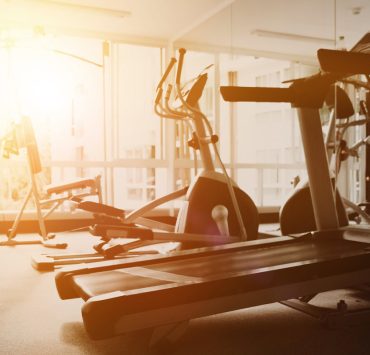If you’ve found this post, it’s safe to assume you’ve got serious fitness ambitions. And it can’t get more hardcore than military training! The military trains its soldiers to be exceedingly fit—both physically and mentally—so they’re prepared for anything they may encounter in their Armed Forces career, including hand-to-hand combat. Military training is typically very demanding, and it is designed to push soldiers to their limits.
Let’s look at the U.S. Army Combat Fitness Test (ACFT) for reference. The ACFT has six events that test the strength and endurance of the complete upper and lower body muscles. The first five events take between 2 to 5 minutes each and the final event (the 2-Mile Run), takes up to 25 minutes to complete.
- 3-Repetition Maximum Deadlift (MDL)
- Standing Power Throw (SPT) with a 10 lb. ball
- Maximum Hand-Release Push-Ups (HRP) in 2 minutes
- A Sprint-Drag-Carry (SDC) medley using sleds and kettlebells (5 x 50 meter shuttles for time)
- Maximum Plank (PLK) hold
- 2-Mile Run (2MR), for time
Not for the faint of heart! But why these specific exercises? The above six events are designed to collectively measure the following fitness components:
- Explosive power
- Balance
- Coordination
- Flexibility
- Muscular strength
- Muscular endurance
- Anaerobic power
- Anaerobic endurance
While this test is only required once a year, Army leadership conducts regular group training sessions to make sure the soldiers maintain their physical fitness levels at all times.
So how can you get in on these fitness principles without having to go to boot camp? Here are the fundamental pillars of military fitness training:
Intensity
Military training is designed to be intense and challenging. This helps soldiers to develop the physical and mental strength they need to succeed in combat. Army soldiers often train with little to no additional equipment as they have to train in large groups with limited facilities. Therefore, they focus largely on body-weight exercises like push-ups and pull-ups and perform them in a circuit, which involves minimal rests of 30-60 seconds per exercise before jumping to the next.
Military training also aims towards muscle failure, which means completely exhausting the muscle to the point that it cannot perform one more repetition of the exercise. One study suggests that the fatigue caused by muscle failure may be related to greater muscle activation, which would explain the greater increases in muscle strength when performing repetitions to failure.
Consistency
Military training requires consistency to ensure soldiers are ready for battle at any moment. This also helps soldiers to develop essential physical skills, improve muscle memory and efficiency, and keep challenging their bodies to reach new physical heights.
Army training sessions are typically conducted for 1 to 1.5 hours, 5 days a week, alternating between cardio days and strength training days. A 5-10 minute warm-up of stretching and light calisthenics before the workout and a 5-10 minute cooldown of stretching after the workout also help reduce the risk of injury while training.
Consistency in nutrition is also very important. The military eats frequent small meals every 3 to 5 hours, consisting of vegetables, healthy fats, and lean proteins to make sure their bodies are fueled with all of the necessary vitamins and nutrients to support their metabolism and body for training. In addition, it is vital to stay hydrated with 2 to 3 liters of water a day, as military training is often conducted outside and in the heat during the summer months, which can lead to severe dehydration.
As consistent as soldiers are, they too are allowed to have cheat days and can indulge in that pizza or candy once a week, which keeps that motivation to train hard going.
Teamwork
Possibly the most emphasized principle in military training is teamwork. Soldiers are always working together to most effectively accomplish their missions, and this is fundamental to every aspect of training. During the warmer months, some units conduct a weekly Sports Day where they do group sports like soccer, which works as a fun and refreshing way to train together while continuing to improve their communication and coordination as a unit.
How to Apply the Principles of Military Training to Your Workout
There is a growing body of scientific evidence to support the benefits of military-style training. A 2021 study found in the International Journal of Exercise Science that that military-style training may improve cardiovascular health and blood pressure more than resistance training. Another 2020 study, published in Scientific Reports found that high-intensity interval aerobic fitness and strength training paired with nutritional supplements can enhance both cognitive and physical function.
So how can you go about applying the principles of military fitness to your workout without having to enter basic training? Here are some tips:
- Rep to failure
- Exercise five times a week
- Create a fitness plan that targets all fitness components with an equal mix of Strength Training and Cardio
- Ditch the machines and go for calisthenics, plyometrics, free weights, obstacle courses, running and circuit training!
- Work out with a partner or a group.
- Eat every 3-5 hours with nutritious protein-packed meals
- Hydrate with 2-3 liters of water a day while training
- Stretch: Be sure to incorporate full-body stretches so you don’t miss out on any muscle groups.
Military training is incredibly demanding and not for everyone depending on each person’s level of fitness. However, by incorporating some of these basic tips, you can certainly gain momentum towards your ultimate fitness goals.
Tip: Don’t Forget Your Recovery!
If you’re training this hard (or even slightly hard), your body will require careful consideration paid to your recovery routines. And that means more than just a cursory stretch before and after your workout—you’ll need to optimize your nutrition, ensure sufficient rest (both through sleep hygiene and by simply taking days off), and give extra care to the muscles, joints, and bones that are doing all that hard work! Regular massage, including specialized techniques like sports massage, will help reduce workout-related soreness while also mitigating the injury risks associated with such hardcore training.







